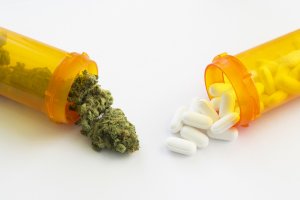Medically Reviewed
The Most Commonly Abused Drugs in College
2 min read · 1 sections
 Many young adults experiment with various types of drugs during their college years. As many as 1 in 3 students say they have abused alcohol at some point, and 1 in 5 have used an illicit drug.This type of behavior can lead to addiction.
Many young adults experiment with various types of drugs during their college years. As many as 1 in 3 students say they have abused alcohol at some point, and 1 in 5 have used an illicit drug.This type of behavior can lead to addiction.
Here are five of the most commonly abused drugs in college:
- Alcohol
A large number of college students are introduced to drinking at campus parties. Many of them don’t just drink, though. They binge drink. This means that they consume four or more alcoholic beverages per hour, bringing their blood alcohol content(BAC) to dangerously high levels. It is not only binge drinking that is dangerous, either. The medical journal The Lancet recently published a landmark study demonstrating how deadly alcohol consumption can be at any level.2 According to the study authors, “we now understand that alcohol is one of the major causes of death in the world today. We need to act urgently to prevent these millions of deaths. And we can.”
- Marijuana
Second to alcohol, marijuana is the most commonly abused drug. Popularity is not the only thing these two drugs have in common, though. Much like alcohol, marijuana is now legal in many states (although like alcohol it is not without risks simply because of its legality). Nearly 50% of college students admit that they have used marijuana for recreational reasons.3 This is likely due to the great deal of pressure students face while pursuing their education. The relaxing components of marijuana make it a tempting outlet for escape.
- Opioids
The misuse of prescription pills (without a prescription) is arguably the most dangerous form of substance abuse that exists today. On average, opioids like OxyContin and Vicodin contribute to the loss of 130 lives every day.4 Addiction can occur after just 10 consecutive days of use, making these narcotics just as addictive as they are dangerous.
- Stimulants
Prescription medications such as Ritalin and Adderall are quickly becoming the drug of choice on school campuses. This is due to their ability to increase focus and help people pay better attention to tasks such as studying. For college students who often stay up late cramming for tests, this benefit feels worth the risk. According to results from the 2017 National Survey on Drug Use and Health, approximately 60% of young adults using prescription stimulant medications for nonmedical use have obtained them from their peers.5
- Sedatives
Another commonly abused class of drugs are sedatives, which include Valium and Xanax. They are often prescribed to patients to relieve anxiety and panic attacks. Essentially, their purpose is to assist with relaxation and promote sleep. When used in combination with alcohol, however, these drugs can slow your breathing rate so adversely that it can result in death.
Research shows us that drug abuse in college continues to be a common occurrence. What begins as carefree experimentation can often lead to a dangerous fight for sobriety. Fortunately, there are rehab programs and sober living facilities available to those in need of assistance.
Sources:
- Lipari, R.N., & Jean-Francois, B. A Day in the Life of College Students Aged 18 to 22: Substance Use Facts. The CBHSQ Report: May 26, 2016. Center for Behavioral Health Statistics and Quality, Substance Abuse and Mental Health Services Administration, Rockville, MD.
- Global Burden of Diseases 2016 Alcohol Collaborators. (2018). Alcohol use and burden for 195 countries and territories, 1990–2016: a systematic analysis for the Global Burden of Disease Study 2016. Lancet, 392(10152), 1015-1035.
- Johnston, L.D., O’Malley, P.M., Bachman, J.G., Schulenberg, J.E., & Miech, R.A. (2012). Monitoring the Future National Survey Results on Drug Use, 1975–2011: Volume II, College students and adults ages 19–50. Ann Arbor: Institute for Social Research, The University of Michigan.
- Seth, P., Rudd, R.A., Noonan, R.K., & Haegerich, T.M. (2018). Quantifying the Epidemic of Prescription Opioid Overdose Deaths. American Journal of Public Health, 108(4), 500–502.
- Substance Abuse and Mental Health Services Administration. (2017). 2017 National Survey on Drug Use and Health.

